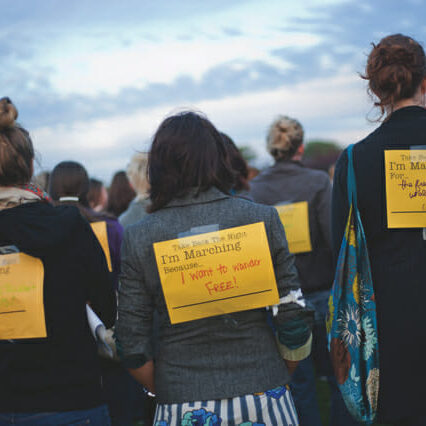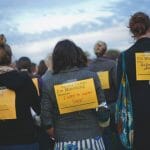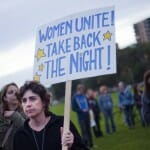
Why newspapers should take pictures at protests
In the past two weeks, there have been two major protests covered in the media and the Gazette was a part of that coverage. We sent reporters and photographers to both the SlutWalk event and the annual Take Back the Night march.
Both were fairly standard, if important, stories. These sorts of things come up in newsrooms all the time: a press release or the grapevine sends word of a protest and a rookie reporter or two get sent out to cover it in case anything goes down.
That reporter is told to get a few quotes, a good photo, and to put together a few words for the paper. Students at Dal in 40 or 50 years will read those articles as they study feminism and women’s rights in our generation. That’s why, while they’re often seen as easy events to cover, it’s imperative we do a good job. These events are both crucial to our campus and our public consciousness. We need a fair and unbiased record of that.
This week, we received complaints about media access at both of the events mentioned. The protestors don’t want their protest shown, and that strikes we crusty journalist types as a bit backwards.
See, there are always emotions at protest events, and any good storyteller wants to find that. There’s anger at Take Back the Night because violence against women is so wrong that it deserves a response. There’s pride, too, and solidarity. It’s easy to get caught up–people do.
It’s understandable, given the atmosphere and the exposure of such events that people feel the media intrude.
We do intrude, but that’s our job. Otherwise no one would ever know. People across Canada, be they parents, friends or faces, can read the articles or see the photos. They can see what happened now. When you protest something, you invite the public into your bedroom.
For most events, this promotion is good. SlutWalk organizers wanted to get noticed. That makes their point stand out. Media show up because in this case that event matters. Take Back the Night is a powerful statement by women, and that matters, too.
As reporters, writers and as people we know that these things are important and also difficult. We stick our microphone or our camera in because we need to hear that side of the story — often an underrepresented view. We’re not there to comfort people or project any statement, we’re there to show what happened. So why did this year’s protests make our job difficult?
At Take Back the Night, our photographer could barely get access, until other media pointed out the event was on public property where anyone can go and take photos at their leisure. Our SlutWalk article made waves because we had the audacity to take a photograph of one of the protesters who was marching in only her bra.
Any event held on public property can be photographed. In a rented building, or a private building–that’s different. If you march down a main street in a bra, the media will take your photo. If you lead a march protesting violence against women, you will get reporters asking tough questions. It’s naive to expect otherwise. Welcome to public life.
This is actually a good thing for everyone. It gives the subjects exposure, and it gives the public information. It’s naive to expect journalists wouldn’t do their job. That job isn’t always to be a nice voice: the media can be your friend one moment and your worst enemy the next. Say something stupid to a journalist and you’ll see it in print.
It takes great courage to come out from a classroom, or from behind your blog or your couch and actually show what you believe in. Public action, as reported by us and judged by others, should be celebrated, not shunned, and the complaints we received ask the media to silence already underrepresented voices.
Not only do we as reporters not want to do that, we won’t. It isn’t fair to our sources, it isn’t fair to the public and it isn’t fair to our stories.
- Read their backs, not their lips. Photo by Angela Gzowski
- Signs of Change. Photo by Angela Gzowski
- Getting the message across through media. Photo by Angela Gzowski
- Take Back The Night. Photo by Angela Gzowski










